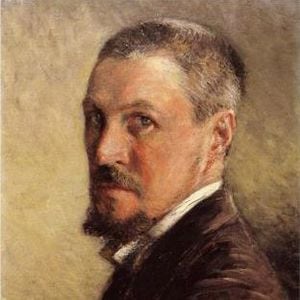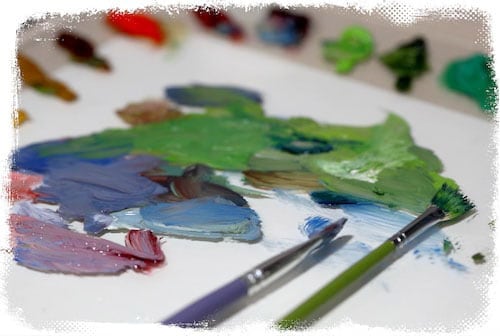
Gustave Caillebotte
Gustave Caillebotte
1 to 30 out of 289 items
1 to 30 out of 289 items
Though he was a vital member of the Impressionist movement, Gustave Caillebotte's style of painting occasionally had Realist overtones and, in some ways, foreshadowed the Post-Impressionists' experimenting with painting. Caillebotte created inventive compositions that exhibited snapshots of daily life with cropped figures and extended perspectives, influenced by photography's modern emergence and growth. His fascination with Japanese prints inspired him to experiment with distorted perspectives and flattened forms, which advanced the avant-garde style. His works serve as Impressionist records of Paris's widened boulevards and open views following the completion of the Haussmannization project in 1870.
Early Years & Education
Gustave Caillebotte was raised happily in a wealthy Parisian family. Martial, his father, was a judge at the Tribunal de Commerce in addition to inheriting a textile company. When Martial wed Celeste Dufresne, the mother of Gustave, he had already been widowed twice.
The Caillebotte family started spending the summers at a manor near Yerres in 1860. It was situated by the Yerres River 12 miles south of Paris. Gustave Caillebotte started to sketch and paint in the big house where the family lived.
After completing his legal studies in 1868, Caillebotte was granted a license to practice law two years later. For the Franco-Prussian War, the ambitious young man was enlisted in the French Army. His service was rendered between July 1870 and March 1871.
Training
Gustave Caillebotte decided to pursue his art with more vigor after the Franco-Prussian War was over. Leon Bonat, a painter, welcomed him into his studio and urged him to pursue a career in the arts. Emile Zola, Edouard Manet, and Edgar Degas were among the acquaintances of Bonnat, a professor at the Ecole des Beaux-Arts. Later on, Bonnat would teach Georges Braque, John Singer Sargent, and Henri de Toulouse-Lautrec.
Tragic events happened to the Caillebotte family while Gustave pursued his artistic career. Both his brother Rene and his father passed away in 1874. He lost his mother in 1878. Martial, Gustave's brother and his family were the only survivors, and they shared the family's wealth among themselves. Gustave Caillebotte made acquaintances with avant-garde artists Claude Monet and Pablo Picasso as he started to rise in the art world.
Renowned Painter
Caillebotte unveiled his first works in 1876 at the second impressionist exhibition. Later that year, for the third show, Caillebotte unveiled "The Floor Scrapers," one of his most well-known works. The artwork had already been turned down for the Salon of 1875, the official exhibition of the Academie des Beaux-Arts. They claimed it was "vulgar" to show average workmen laying a floor. Jean-Baptiste-Camille Corot's whimsical paintings of peasants were acceptable, but accurate representations were not.
Caillebotte painted a lot of serene family settings in gardens and the interiors of houses, such as "The Orange Trees" from 1878. He also found inspiration in the rural setting of Yerres. The 1877 painting he produced, "Oarsman in a Top Hat," honors the men rowing down the serene river.
The most well-known of Caillebotte's works depict metropolitan Paris. His 1875 painting "Paris Street, Rainy Day," in the opinion of many, is his best work. It is carried out in a flat, nearly photorealistic manner. The picture persuaded Emile Zola to believe Caillebotte was a "courageous" young painter who bravely tackled contemporary issues. Some historians think Gustave Caillebotte should be classified as a realism painter rather than an impressionist, even though "Paris Street, Rainy Day" was displayed with the impressionists.
Critics of the time were displeased with Caillebotte's utilization of innovative views and points of view. With the observer on the balcony and the subject gazing over the scene below him, his 1875 painting "Young Man at His Window" presented the issue from the rear. Some spectators were enraged by the cropping of persons towards the edge of a picture like "Paris Street, Rainy Day."
Caillebotte purchased a home in the Seine River's northwest Paris suburbs in 1881. He soon started a new hobby—building yachts—which quickly took up much of his free time. He barely painted at all by the 1890s. The large-scale pieces he had been creating had ceased. Caillebotte went away at the age of 45 in 1894 after having a stroke while tending to his garden.
Supporter of the Arts
Gustave Caillebotte was important to the art world as a working artist and patron, thanks to his family's fortune. He helped financially with Claude Monet, Pierre-Auguste Renoir, and Camille Pissarro as they battled for public recognition and monetary success. Additionally, Caillebotte periodically paid the rent for other artists' studios.
Caillebotte made his first acquisition of Claude Monet's artwork in 1876. He quickly rose to prominence as a collector. He assisted in persuading the Louvre Museum to buy "Olympia," a famous and divisive artwork by Edouard Manet. Caillebotte gathered a stamp collection in addition to his art collection, which is now housed in the British Library in London.
Legacy
The art world mostly forgot Gustave Caillebotte after his passing. Fortunately, "Paris Street, Rainy Day" was acquired by the Art Institute of Chicago in 1964 and given a prominent place in the public galleries. The painting has since gained iconic significance.
The core group of paintings from the era that belongs to the country of France currently includes a sizeable portion of Caillebotte's collection of impressionist and post-impressionist pieces. The Barnes Collection in the United States contains another noteworthy collection of images that once belonged to Caillebotte.
Most paintings Gustave Caillebotte did are about Landscape, People, Garden, Still life, Seascape, Portrait, Cityscape, and other subjects.
Most of the artist's works that can be seen by the public today are now kept in museums like Musée d'Orsay, Wallraf-Richartz-Museum & Fondation Corboud, Art Institute of Chicago, and others.
Famous Gustave Caillebotte period artists include Pierre Auguste Renoir (French, 1841 -1919), John Singer Sargent (American, 1856 -1925), Eugène-Louis Boudin (French, 1824 -1898), Claude Monet (French, 1840 -1926), Camille Pissarro (French, 1830 -1903), Marianne North (British, 1830 -1890), Vincent van Gogh (Dutch, 1853 -1890), Ivan Constantinovich Aivazovsky (Russian, 1817 -1900), Alfred Sisley (French, 1839 -1899), Sir John Lavery, R.A. (Irish, 1856 -1941), William Merritt Chase (American, 1849 -1916), Paul Cézanne (French, 1839 -1906), and others.
Get inspired by the most famous paintings of Gustave Caillebotte. Pick your favorite, and one of our talented artists will make a copy just like the original, making it a unique gift or piece of art for your home. If you can't find a specific Gustave Caillebotte, contact us for a price quote.






























